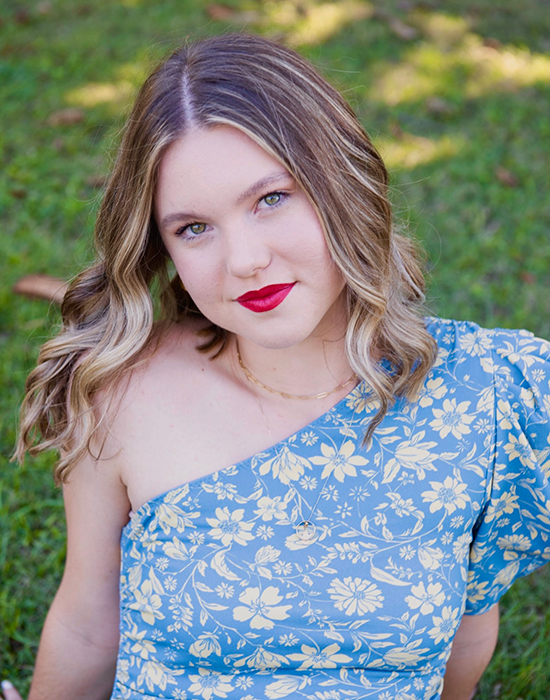University of Alabama at Birmingham Photo Credit: Margaret Birks sophomore Margaret Birks is wasting no time pioneering a greener future for her community.
Photo Credit: Margaret Birks sophomore Margaret Birks is wasting no time pioneering a greener future for her community.
Double majoring in chemistry and physics with a minor in mathematics in the UAB College of Arts and Sciences, the Columbus, Mississippi, native began her college career seeking opportunities to lay a resourceful foundation to help cultivate her undergraduate experience.
“The fall of my freshman year, I was blessed to be named an International Research Experiences for Students scholar and a member of Dr. Andrei Stanishevsky’s lab in the Department of Physics,” Birks said. “This enabled my undergraduate research and allowed me to receive other opportunities such as the NASA scholar award.”
With a passion for the environment, Birks pulled from her hometown experience to shape the trajectory of the research she wants to contribute to society.
“I grew up reading National Geographic, which has a heavy narrative on climate change, global warming and the importance of eco-friendly habits,” Birks said. “Although the publication has many great ideas and solutions, they were often unrealistic for my hometown, one whose town population is less than that of Tuscaloosa’s and deeply poverty-ridden.”
Discover your career path through UAB’s Find Your Degree portal.
Birks aspires to use her research to help discover a more economically and environmentally friendly energy source for low-income and rural communities.
“In my opinion, most eco-friendly solutions negate low-income Americans, specifically those in rural areas,” Birks said. “Although electric cars and solar panels are great, these might not always be realistic solutions for many people, thus inspiring my research here at UAB.”
At the beginning of her research, Birks worked with methane plasma. Methane is a chemical compound and a primary component in natural gas. Methane is also a harmful greenhouse gas that can be damaging to the ozone layer.
 Click image to apply to UAB.“Methane’s damage to the ozone is greater than carbon dioxide in some cases,” Birks said. “After much work in the lab, plasma catalysis resulted in momentary successful separation of gas species.”
Click image to apply to UAB.“Methane’s damage to the ozone is greater than carbon dioxide in some cases,” Birks said. “After much work in the lab, plasma catalysis resulted in momentary successful separation of gas species.”
After her research using plasma catalysis, Birks wanted to move forward with the extraction and storage of hydrogen.
Recently, Birks was able to spend her summer in Europe developing metal organic frameworks.
“An MOF is a chemical lattice that will allow me to store and extract hydrogen energy from methane,” Birks said.
A member of the Physics Departmental Honors program, Birks says she plans to continue her research project while pursuing her undergraduate degree so that she may utilize graduate school to expand this project to reach rural and low-income communities in America.
“I hope to complete a project that has the potential to save Americans thousands of dollars in energy bills and save the planet from the harmful gas of methane,” Birks said.
| The UAB College of Arts and Sciences provides students with a supportive community of scholars. Click here to learn more. |
